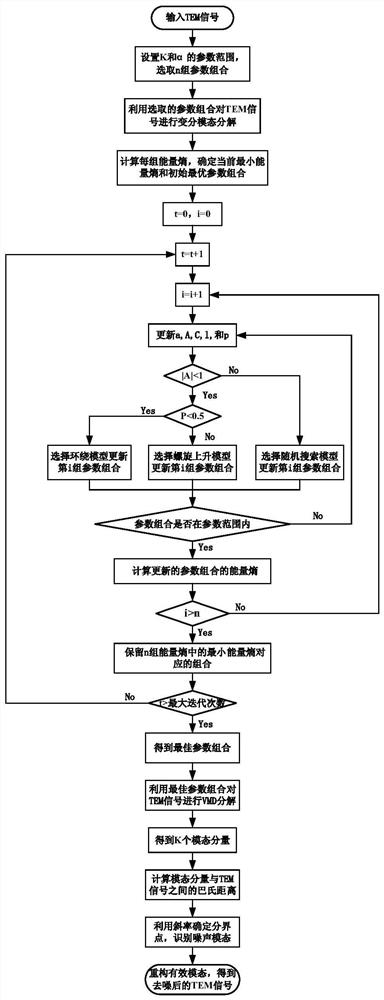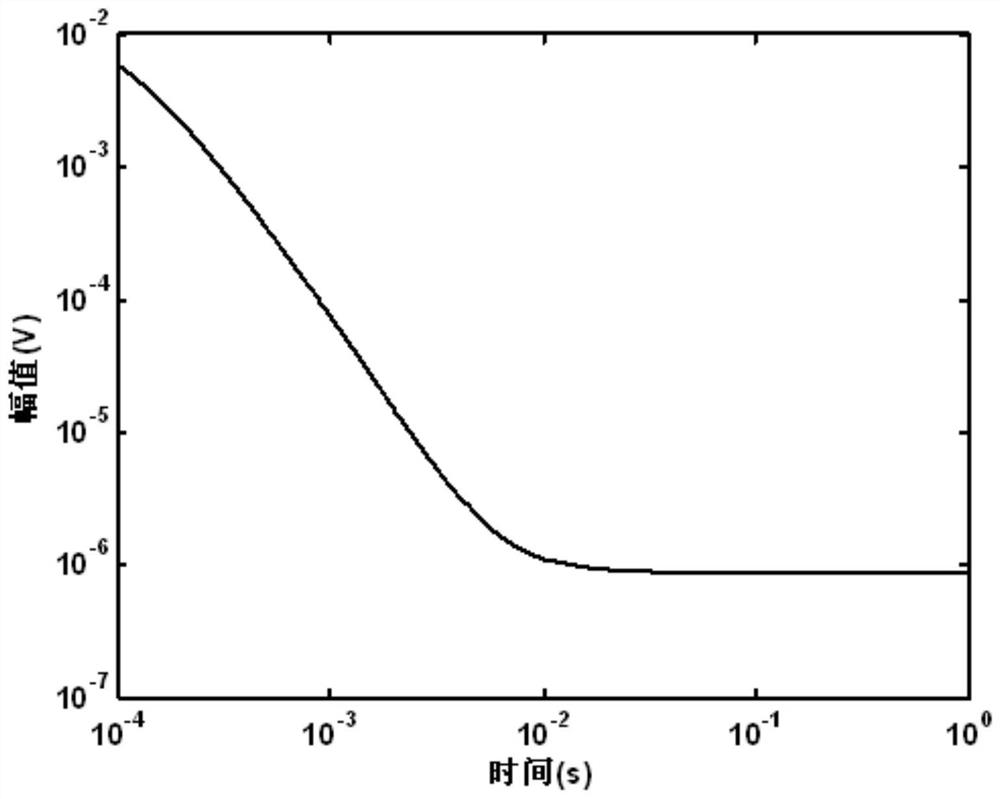Transient electromagnetic signal noise separation and recognition method based on improved variational mode decomposition
A variational modal decomposition and transient electromagnetic technology, applied in the field of signal processing, can solve the problems of affecting noise separation and identification, unable to achieve optimal decomposition, subjective results, etc., to reduce workload, facilitate signal reconstruction, The effect of fewer operators
- Summary
- Abstract
- Description
- Claims
- Application Information
AI Technical Summary
Problems solved by technology
Method used
Image
Examples
Embodiment Construction
[0053] In order to have a clearer understanding of the technical features, purposes and effects of the present invention, the specific implementation manners of the present invention will now be described in detail with reference to the accompanying drawings.
[0054] refer to figure 1 , the present invention provides a transient electromagnetic signal noise separation and identification method based on improved variational mode decomposition, including:
[0055] Using the Whale Optimization (WOA) algorithm to search globally for the modal number K and the penalty factor α in the variational mode decomposition algorithm, the optimal parameter combination is obtained;
[0056] Use the obtained optimal parameter combination to perform variational mode decomposition (VMD) on the transient electromagnetic signal to achieve signal-to-noise separation;
[0057] The noise mode in the modal component is identified by the improved Bhattacharyachian distance algorithm, and the noise el...
PUM
 Login to View More
Login to View More Abstract
Description
Claims
Application Information
 Login to View More
Login to View More - R&D
- Intellectual Property
- Life Sciences
- Materials
- Tech Scout
- Unparalleled Data Quality
- Higher Quality Content
- 60% Fewer Hallucinations
Browse by: Latest US Patents, China's latest patents, Technical Efficacy Thesaurus, Application Domain, Technology Topic, Popular Technical Reports.
© 2025 PatSnap. All rights reserved.Legal|Privacy policy|Modern Slavery Act Transparency Statement|Sitemap|About US| Contact US: help@patsnap.com



